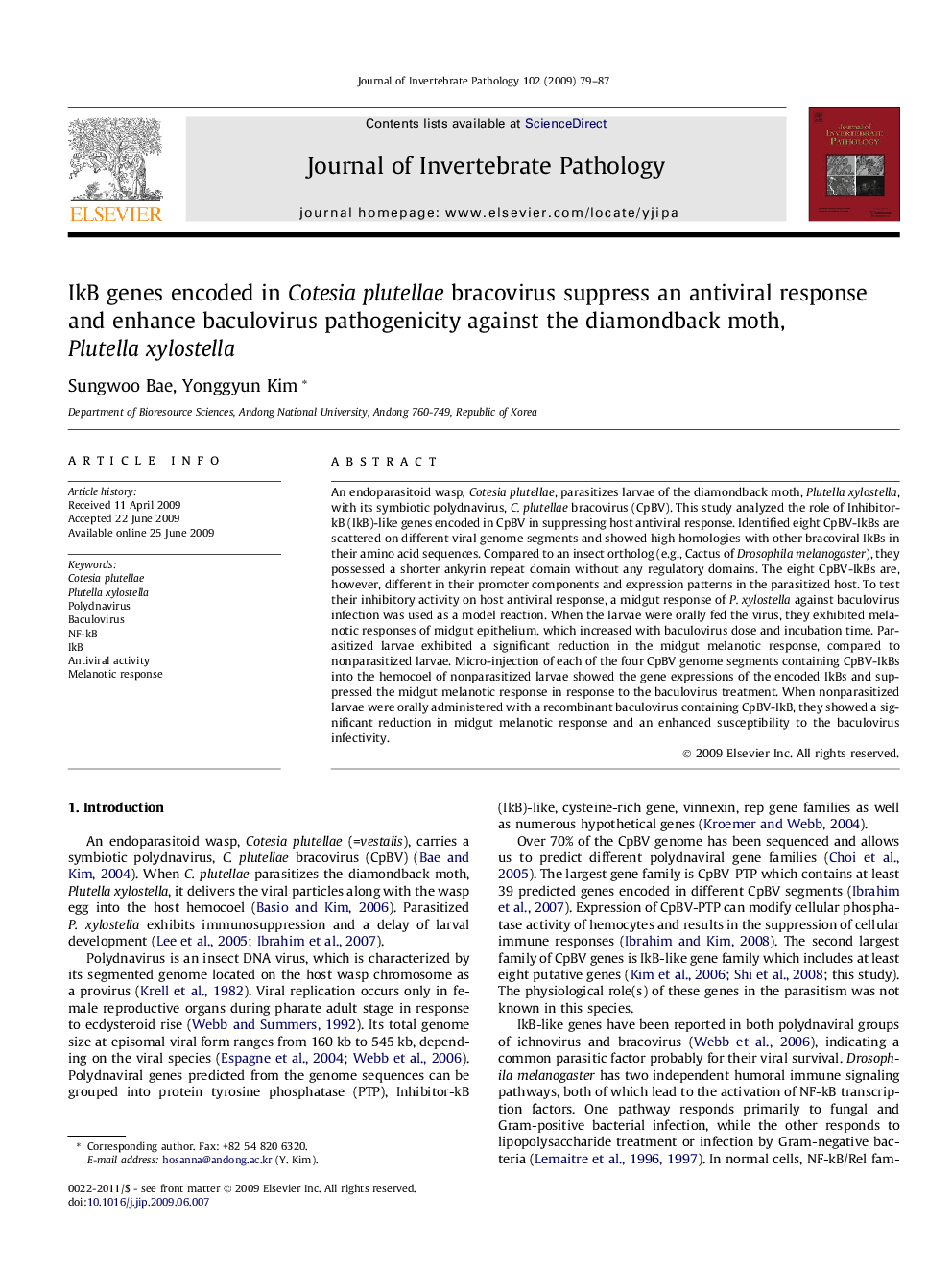| Article ID | Journal | Published Year | Pages | File Type |
|---|---|---|---|---|
| 4558073 | Journal of Invertebrate Pathology | 2009 | 9 Pages |
An endoparasitoid wasp, Cotesia plutellae, parasitizes larvae of the diamondback moth, Plutella xylostella, with its symbiotic polydnavirus, C. plutellae bracovirus (CpBV). This study analyzed the role of Inhibitor-kB (IkB)-like genes encoded in CpBV in suppressing host antiviral response. Identified eight CpBV-IkBs are scattered on different viral genome segments and showed high homologies with other bracoviral IkBs in their amino acid sequences. Compared to an insect ortholog (e.g., Cactus of Drosophila melanogaster), they possessed a shorter ankyrin repeat domain without any regulatory domains. The eight CpBV-IkBs are, however, different in their promoter components and expression patterns in the parasitized host. To test their inhibitory activity on host antiviral response, a midgut response of P. xylostella against baculovirus infection was used as a model reaction. When the larvae were orally fed the virus, they exhibited melanotic responses of midgut epithelium, which increased with baculovirus dose and incubation time. Parasitized larvae exhibited a significant reduction in the midgut melanotic response, compared to nonparasitized larvae. Micro-injection of each of the four CpBV genome segments containing CpBV-IkBs into the hemocoel of nonparasitized larvae showed the gene expressions of the encoded IkBs and suppressed the midgut melanotic response in response to the baculovirus treatment. When nonparasitized larvae were orally administered with a recombinant baculovirus containing CpBV-IkB, they showed a significant reduction in midgut melanotic response and an enhanced susceptibility to the baculovirus infectivity.
